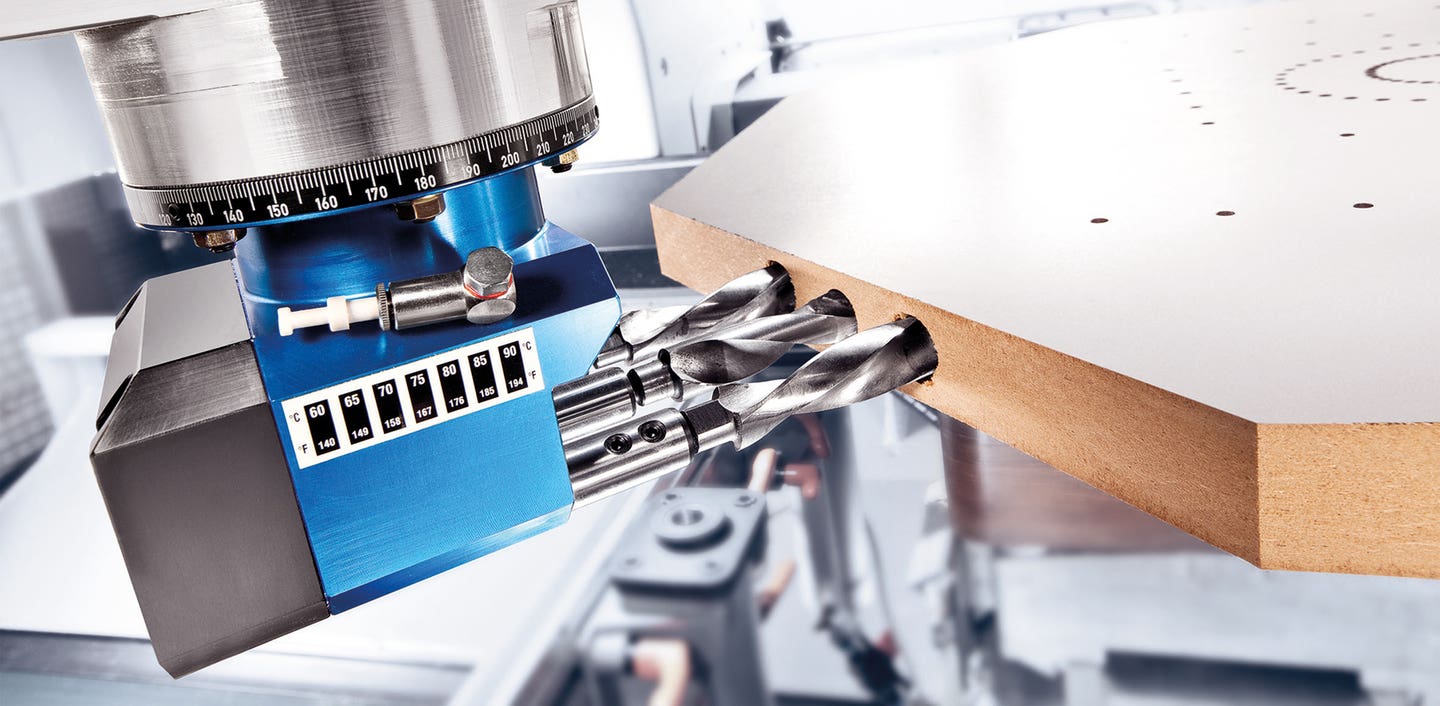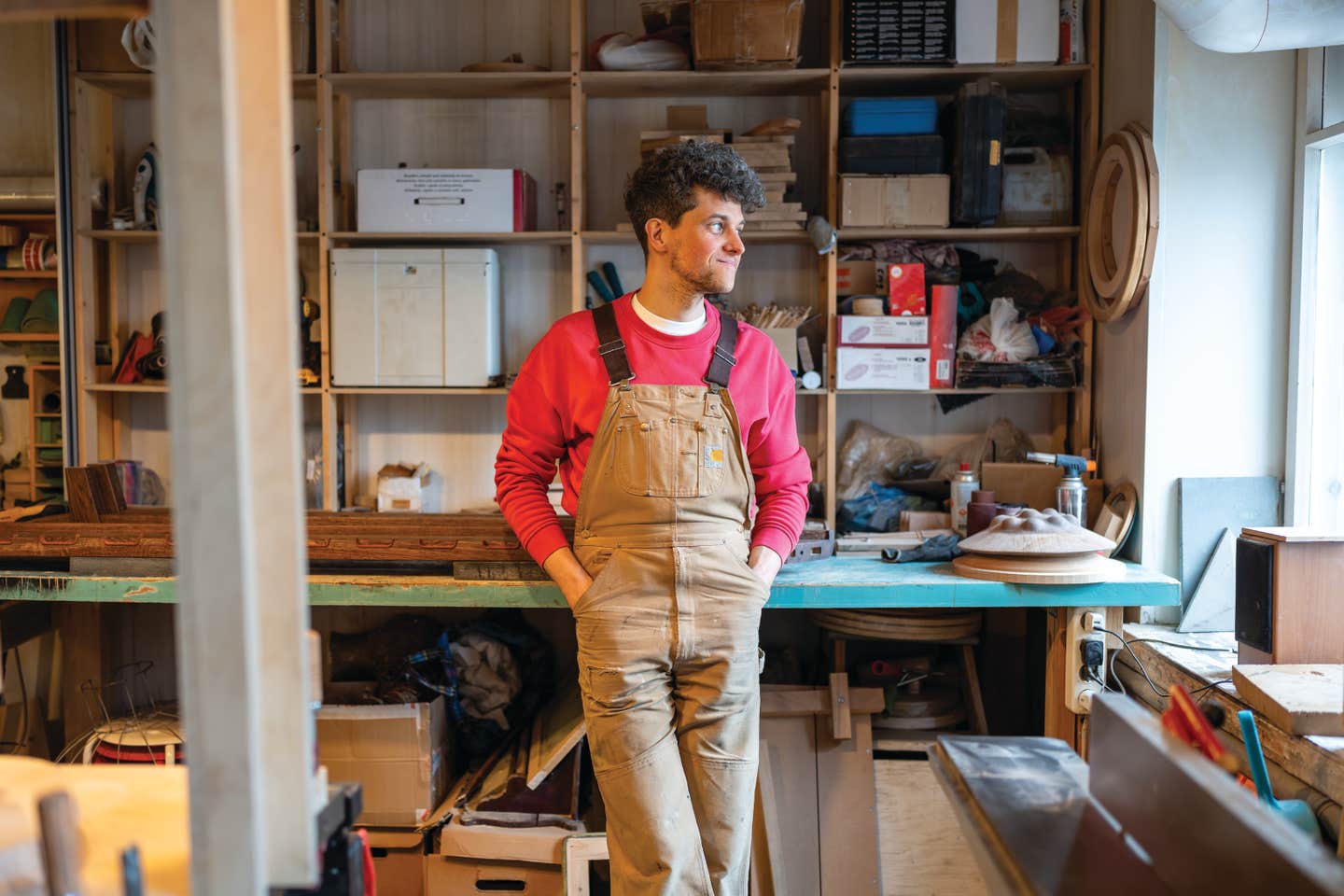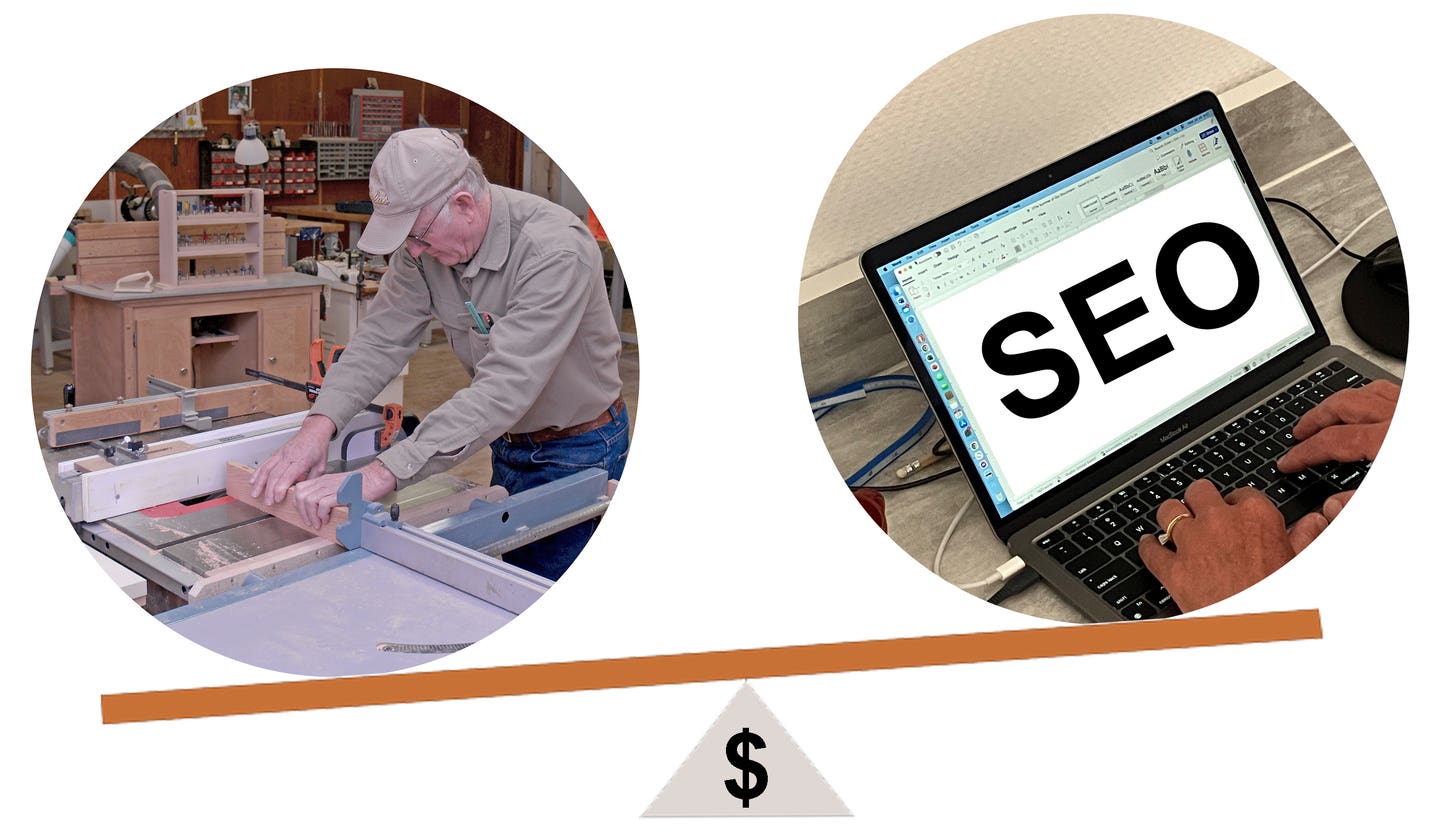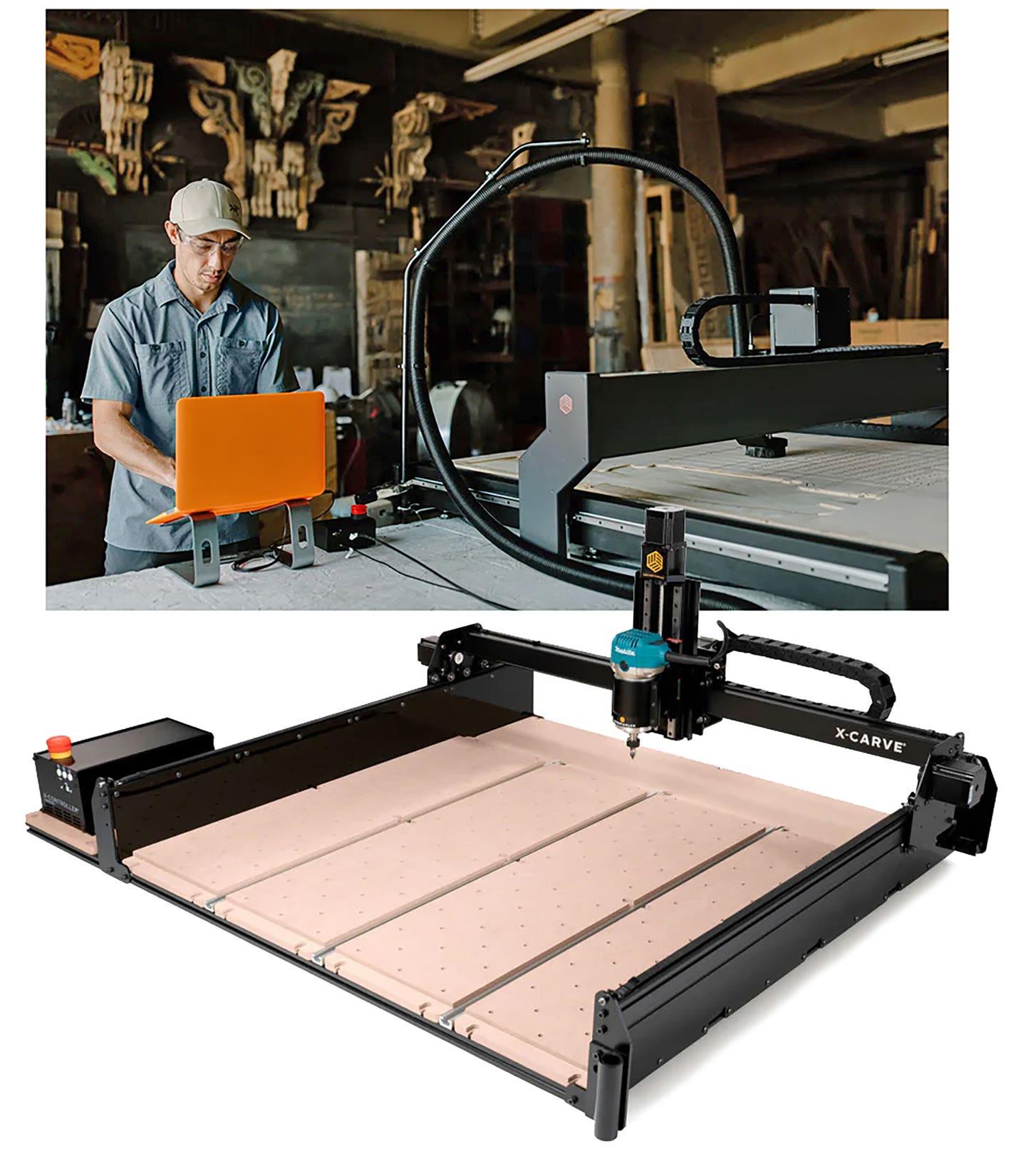Counter Culture
New countertop options include products made from recycled paper and plastics, fiberglass and bamboo.
In the summer of 1959, Johnny Cash visited Ireland and wrote a song about the Emerald isle. The title of the work was Forty Shades of Green, and that’s an apt description of the way that woodshops are trying to meet consumer demand for better, cleaner and healthier products. The current shades of green involve everything from formaldehyde-free coatings and fiberboard to environmentally sound glues, foils and contact cement.
But one aspect of the green revolution, countertops, doesn’t seem to get its fair share of attention. That’s a little surprising when one considers the amount of square footage they can occupy.
CaraGreen LLC (caragreen.com) is trying to change that. In the Irish language “cara” means friend, and this company’s offerings are designed to be environmentally friendly. Headquartered in Raleigh, N.C., it distributes eco-responsible products which it refers to as healthier alternatives to conventional building materials. Among them is PaperStone, a heavy-duty solid surface material that is made from 100 percent post-consumer recycled paper and a proprietary, petroleum-free resin. The distributor describes it as having “steel-like strength in span, and stone-like beauty”. Most PaperStone products are certified recycled by the Rainforest Alliance to Forest Stewardship Council standards, and are also certified food safe by NSF International. Panels can be cut and routed with carbide-tipped shop tools, and they machine and finish like extremely dense hardwood.
Another new countertop being distributed by CaraGreen is Koskisen Eco Transparent Plywood, which is made from Finnish birch plywood. Both faces have a colored, translucent coating that emphasizes the wood’s natural grain, and they’re protected by an overlaid, transparent, durable film. This is a hardwearing, crack resistant, smooth and clear melamine surface that is ideal for jobs such as retail displays.
CaraGreen also distributes other green countertop materials including Lapitec (sintered stone, made of 100-percent minerals with no resins or petroleum derivatives), and Durat, which is a solid surface material made from 30 to 50 percent recycled hard plastics that can be used to create seamless tops. Also in the catalog is Elemental, which takes plastic and metal from the post-consumer waste stream and melds them together into a stunning, easily machined, seamless surface. And IceStone is a family of durable surfaces that are made from recycled glass and cement, which create a highly durable concrete surface. It is cut, installed, and maintained just like mined stone, and comes in a variety of shades that range from soft, earth-toned neutrals to rich, vibrant colors. IceStone is ideal for kitchen countertops, back splashes, bathrooms, tabletops, bar tops, fireplace surrounds, conference tables, and reception areas. It is NSF certified for use in food service areas.
Laminates
Plastic laminate was the countertop of choice in American kitchens for many decades, but it eventually lost some ground to solid surface materials, engineered stone and natural marble and granite. Now, with advances in graphics and more environmentally sound manufacturing practices, laminate is making a comeback. These surfaces can look as realistic as rock and other natural choices, and do so at a fraction of the price.
At the NeoCon exhibit in Chicago this June, Formica Corp. (formica.com) focused the industry’s attention on a couple of new, high-tech products that may change the way woodshops look at laminates. Intentek Wireless Charging Surface is a laminate surface that can wirelessly charge Qi-compatible mobile phones simply by placing devices on it. Intended for horizontal applications in commercial spaces (hospitality, retail, healthcare, education and offices) it has charging coils embedded in the laminate that don’t interfere with the aesthetics of the countertop. It will be available in late 2019.
Formica’s new HardStop Decorative Protection Panels are impact-resistant, high-performance wall panels that install easily and coordinate perfectly with other Formica products. What’s different here is that, unlike traditional laminate that contains a paper core, these have a treated fiberglass core for added durability, strength and fire resistance. They are Class A fire-rated and can be applied directly to drywall and many other substrates. HardStop panels are also perfect for vertical applications in settings such as hospitals, restaurants, schools, universities, airports and elevators. Both Intentek and HardStop are being made in the full range of Formica laminates, allowing designers to create a coordinated look throughout an entire design.
Wilsonart Engineered Surfaces (wilsonart.com) in Austin, Texas also has several new lines of plastic laminate. The company’s 2019 Commercial collection includes authentic wood looks, abstract patterns, stones, and solids. But one of Wilsonart’s more eye-catching new countertop options is called Thinscape, a 1/2”-thick panel that comes in a dozen elegant European inspired designs. The company describes it as “the perfect complement to today’s thinner cabinet profiles”, and when it is paired with classic stone and woodgrain designs, it appeals to both contemporary and classic tastes. Thinscape is machined and handled in much the same way as most solid surface materials.
Quebec-based Arborite (arborite.com) has been making high pressure laminate for countertops since 1942, and the company has recently introduced a collection of six stone laminate designs that are being marketing as a crossover from residential to commercial design. They bring the look of stone to a project at a fraction of the cost, and they’re easy to work, install and maintain.
Digital printing has come a long way in a short time, and that’s opening up some new opportunities for customizing countertops. For example, Panolam, whose brands include Nevamar, Pionite and Conolite, recently introduced its new Inspira Digital Collection. This is an expansive digital library of “diverse, playful, and sophisticated imagery for surface solutions”, according to the manufacturer. But Inspira also offers woodshops the ability to create custom designs by using a high-resolution process that provides outstanding quality, vivid colors, and extraordinary detail.
Solid surface options
This is an ever-widening field and now includes Avonite Surfaces (aristechsurfaces.com), Mystera (mysterasurfaces.com), Hi-Macs (lghimacsusa.com), Hyundai L&C (hanexsolidsurfaces.com), Aristech (aristechsurfaces.com), Meganite (meganite.com), Formica, Wilsonart and others. Most innovations here are related to colors rather than cores. For example, DuPont’s Corian introduced 25 new colors at the KBIS show in San Diego this February. The brand also continues to contribute to sustainability and green building through a collaboration with Green Builder Media and the Align project, which is a smart, modular, net-zero independent home.
Samsung Staron (staron.com) is part of the Asian business group Global LOTTE, which has offices in La Palma, Calif. In keeping with the colors theme, Staron introduced its Urban Series last year that features minimalistic and sophisticated patterns in two themes – essentially, browns and blues. The colors are beautiful and hard to describe. If you can imagine this, they evoke warm images of concrete and quarries.
Most solid surface manufacturers stress the color palette, but many also like to point out the advantages of this countertop option. For example, Swanstone, from Swan Surfaces LLC in Centralia, Ill. (swanstone.com) is billed as “the ultimate renewable surface, where stains and scratches can always be buffed or sanded out”. There’s no gel-coat or laminate surface to wear away. It’s compression-molded, not cast, and it won’t crack, mold or mildew. It’s also non-toxic, non-carcinogenic and emits no VOCs.
Naturally so…
Wooden countertops such as maple butcherblock (both edge-glued and end-grain) have been around for a long time, but grass is making major inroads here. Countertop Specialties in Dallas, Texas has a quick but comprehensive guide to bamboo countertops on its website (countertopspecialty.com). The company says that use of this grass is on the rise because it is quickly renewable and therefore eco-friendly, but also because it can give a kitchen that extra spark of style. Bamboo is naturally resistant to bacteria and won’t allow mold or mildew to grow. It’s easy to re-sand and seal again if there’s damage, but it does rely on a topical coating so there’s some maintenance involved. It also doesn’t like heat.
Iowa-based Green Building Supply (greenbuildingsupply.com) distributes Teragren Bamboo countertops, which are sourced in China. The company says that woodshops should keep in mind that drop-in sinks are recommended for bamboo rather than undermount, and that the parquet end grain variety (rather than side-grain) shows the least scratching when customers cut on their counters.
The most commercially viable variety of giant bamboo is Moso (phyllostachys edulis, also known as tortoise shell bamboo), which grows three to five feet a year and is not the one that Pandas eat. It’s native to China and Taiwan but has been cultivated in other countries including Japan. The roots remain in the ground, and just the stalks are harvested.
Other countertop options include poured in place or pre-manufactured concrete tops, engineered stone, ceramic and granite tile, and of course metal. In Europe and some Asian markets, stainless steel, copper and even aluminum are common alternatives for counters. These seem to be regarded more as commercial and healthcare choices in the U.S., but there’s a growing trend toward incorporating metal as accents and on limited surfaces such as island and food prep zones in high-end residential applications.
One last thought: Woodshops looking for a moisture resistant, environmentally sensitive MDF core for countertops might want to take a look at Medex (roseburg.com). It’s especially suitable for interior applications where moisture is a concern, has high screw holding properties, and is made with pre-consumer recycled wood content.
This article originally appeared in the September 2019 issue.







